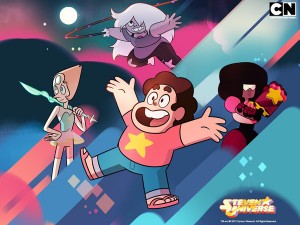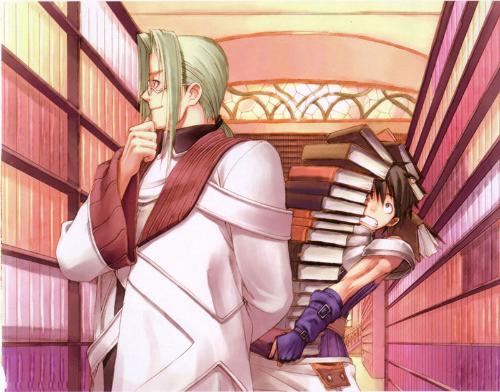The fourth episode of Life is Strange, a critically acclaimed interactive drama series developed by Dontnod Entertainment, released this week. This second-to-last installment is something fans have been perhaps not-so-patiently waiting for, for some time. But despite the ten week long gap between the release of the third episode and this most recent release, Life is Strange‘s subreddit was never deserted. Its tag on tumblr was never empty or filled with mostly old posts. Based on the long hours I’ve spent browsing both of these places, it seems that activity has largely remained constant on them from the time of one episode release to another. Even during the periods where new material was not released, Life is Strange has maintained a devoted, eager, and, above all, engaged fandom.
 Life is Strange isn’t alone in possessing this sort of fan base either. Steven Universe, a cartoon series currently airing on Cartoon Network, for example, is another narrative work that maintains a very similar community. While fandoms or fan sites for video games, television shows, books and other mediums aren’t uncommon, it’s rare to find ones as critically engaged and invested in the narrative as Life is Strange‘s or Steven Universe‘s. Although there are certainly other factors involved, I believe that the way these series set up their unfolding narratives have encouraged the creation of “fan theories” or original, fan-made predictions of what is causing things to occur in the plot or ideas of what will happen. By planting narrative clues for the player or viewer to find that will expand their understanding of the plot or will provide hints of what’s to come, these series have built in a system that not only keeps their audience engaged but actively encourages them to examine unfolding aspects of the plot with a critical eye.
Life is Strange isn’t alone in possessing this sort of fan base either. Steven Universe, a cartoon series currently airing on Cartoon Network, for example, is another narrative work that maintains a very similar community. While fandoms or fan sites for video games, television shows, books and other mediums aren’t uncommon, it’s rare to find ones as critically engaged and invested in the narrative as Life is Strange‘s or Steven Universe‘s. Although there are certainly other factors involved, I believe that the way these series set up their unfolding narratives have encouraged the creation of “fan theories” or original, fan-made predictions of what is causing things to occur in the plot or ideas of what will happen. By planting narrative clues for the player or viewer to find that will expand their understanding of the plot or will provide hints of what’s to come, these series have built in a system that not only keeps their audience engaged but actively encourages them to examine unfolding aspects of the plot with a critical eye.
Warning: some spoilers for Life is Strange episodes 1 – 3 follow; no spoilers for episode 4 are discussed, don’t worry! On the Life is Strange subreddit, a large majority of the threads consist of discussing fan-generated theories. These range from theories as to who the real “villain” of the series is based on how they interact with other characters to whether Rachel Amber – with her immense popularity and amazing grades – may have been a time traveler abusing her abilities like Max to whether the natural disasters occurring in Life is Strange‘s universe are based on a Hopi apocalypse myth because of some graffiti found in the diner. They can be anything from simplistic musings to rather complex ideas involving multiple universes and space-time continuum upsets. While some of these may have sprouted up on their own, most have spawned from the inclusion of small details and bits of foreshadowing scattered throughout the game. When it was revealed at the end of episode 3 that Chloe, in the timeline where her father did not die in an accident, had somehow been injured and was now paralyzed and confined to a wheelchair, many were quick to point out that Dontnod had discreetly foreshadowed this since the first episode by having a scene where Chloe had illegally double-parked in the handicapped parking space and again in episode 3 where she wants to steal money labeled “the handicapped fund.” By providing instances where a thorough attention to the game’s detail resulted in a greater understanding of the game’s narrative, circumstances, and world, it has successfully conditioned players to investigate small but narratively purposeful moments like the foreshadowing of Chloe’s paralysis.
But more than this, it’s also encouraged fans to theorize how clues built into these small details might be foreshadowing for events in future installments of the game and to collaborate with other players to piece together workable theories based on the evidence they’ve found. It praises and rewards players who critically examine the narrative elements of the game. These fan theories, while certainly not always correct and in line with the actual trajectory of the plot, keep discussion of Life is Strange relevant and active even in the game’s “down” periods. With new clues found every day and new fan theories being developed almost constantly, players remain engaged and enveloped in Life is Strange‘s story even when not directly interacting with the game. For a game, whose entire purpose is to draw the user into an alternate plane outside regular life and keep the player enveloped in that “magic circle” of play, being able to extended that circle’s effects even outside the context of the game is an impressive feat.
In actively making use of its episodic format and narrative-driven gameplay, Life is Strange manages to do what not every game is capable of doing: keeping players invested past the end credits. It has conditioned players to realize that every small detail is a purposeful inclusion and to treat it as such, teaching valuable narrative analysis skills. Above all, it has created a self-sustaining way for players to remain engaged and enveloped in the universe of Life is Strange that harnesses the nature of its fans and community.




